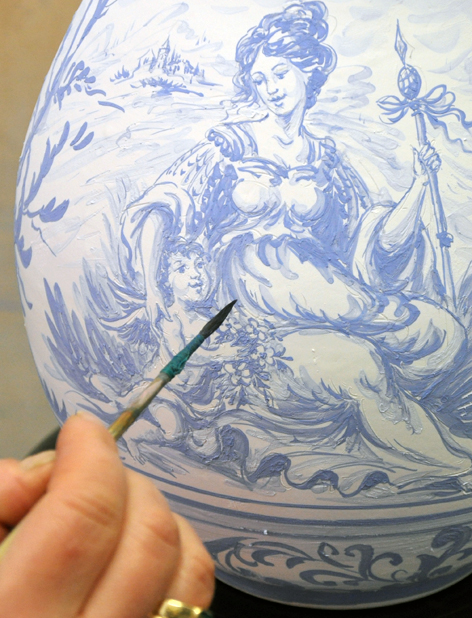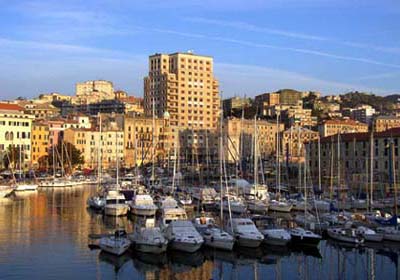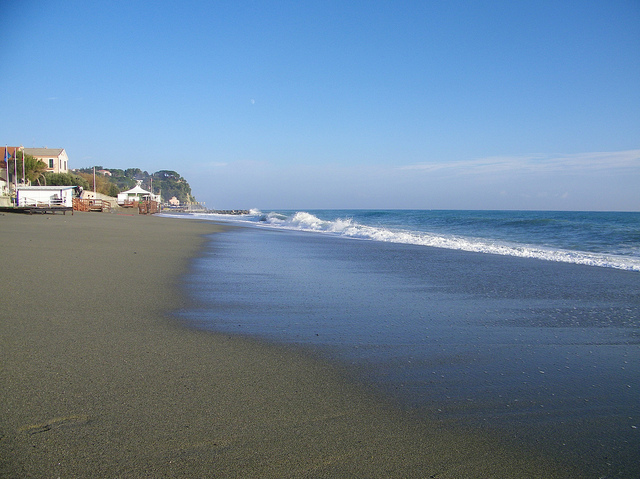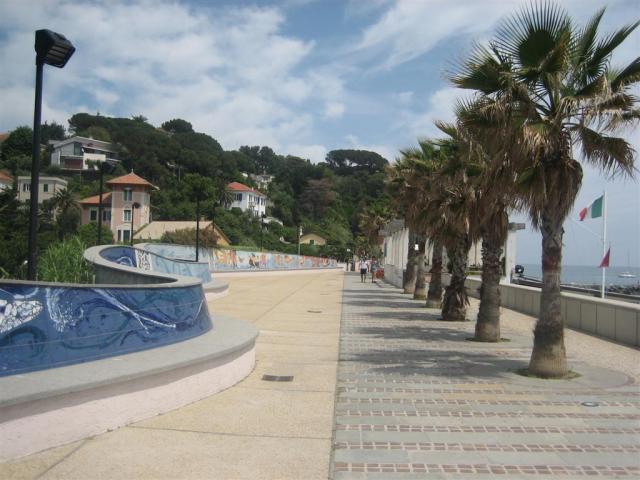Ceramic Studios

Ceramic arts have been a specialty of the area around Savona and Albisola since the XVI century. At the end of the 1500s, 14 kiln operators were producing majolica ceramics and “leggioni”, the local version of typical wall tiles, in direct competition with the more famous Iberian “azulejos”.
Ceramic production reached its peak in the XVII and XVIII Century. The style called “Antico Savona” is known by its typical white and blue colors. In the 1800s the potters further expanded their know-how into the field of terra cotta.
Ceramics came back to the fore in the first decades of the 20th Century thanks to Tullio Mazzotti. The son of the founder (in 1903) of the historic ceramics and majolica factory in Albisola, Tullio was particularly sensitive to art. He became an ardent member of the futurist movement, and thanks to his network of relationships, made Albisola its Italian center.
The town’s fascination with artistic experimentation continued on into the fifties and sixties, when Albisola became the center of important art experiences and contemporary sculpture, attracting famous artists from both Italy and abroad.
The kilometer-long art promenade along the sea, “Passeggiata degli Artisti” in Albissola Marina, displaying works of art and ceramics testifies to the town’s passion. Also worth seeing is the G. Mazzotti House-Museum on Viale Matteotti 29 and the Pinacoteca Civica di Savona which has an important collection of historic ceramics and contemporary works.
Savona with Its Tourist Harbor and Old City

Savona is a lovely little city of around 60,000 inhabitants. It is the capital of the province of its name, and has been profoundly transformed in the last few decades, especially along its waterfront and port.
Savona’s tourist harbor has been recently renovated with the addition of a modern and efficient Maritime Station. Inaugurated in 2003, it was designed by the Catalan architect, Ricardo Bofill. Each year it handles 75,000 passengers, sending them on to the main destinations for cruises in the Mediterranean. Guarding the port is the Torre Leon Pancaldo. The old tower takes its name from the Savonese hero who sailed with Magellan, and is the symbol of the city. In front of it lie the old docks, which with their restaurants and bars fill with life in the evenings along with the many cultural and artisan activities held here.
On the south side of the town, facing the sea, is the Fortress of Priamar. Construction was begun by the Republic of Genoa in 1542, after the Genoese had captured the city in 1528. The huge fortress has today been completely renovated, and is now used for shows and cultural events.
Backing on to the tourist port, is Savona’s extended old city. Streets here are flat, and piazzas hold some marvelous historic palaces. Well worth the visit is Palazzo Gavotti, on Piazza Gilbert Chabrol, the seat of the municipal art gallery, Civica Pinacoteca di Savona. In addition to extraordinary Renaissance paintings, sculpture and important ceramic collections, it has a section dedicated to contemporary art with artists such as Capogrossi, De Chirico, Delvaux, Fontana, Jorn, Magritte, Mirò, Picasso and others from the foundation, Fondazione Museo di Arte Contemporanea Milena Milani. Local ceramic production is exemplified by majolica from the XVI Century, a superb collection of pharmacy vases, and diverse historic and contemporary collections.
200 meters away is the Cathedral of Savona, dedicated to the Assumption. Here you can see a marble crucifix from the 1400s and a baptismal basin carved from a Byzantine capital of the VI century, in addition to many frescoes in the side chapels. Next to the Cathedral, on the same piazza is the Sistine Chapel. It is one of the city’s masterpieces which Pope Sixtus IV – who was born in nearby Celle Ligure in 1414 to an ancient Savonese family – had built for the tomb of his parents. It has been recently restored, and is now used for concerts and public events.
Albisola One and Two: the Boulevard on the Sea and the Ceramic Art Studios
 Five kilometers to the east of Savona is Albissola Marina.
Five kilometers to the east of Savona is Albissola Marina.
With Albisola Superiore, which lies above it on the mountain slope, the two quarters of the medieval town have been internationally known for their artistic ceramics since the Middle Ages. It is still possible today for visitors to come admire the work in numerous artisan workshops and studios.
Albissola Marina also has one of the best examples of environmental art in Italy – its artists’ promenade, the "Passeggiata degli artisti”. Twenty ceramic mosaic panels made by twenty contemporary artists line the one kilometer route interspersed with striped connection panels in white and blue, a homage to Albissola by the artists who set up their studios in the town. Beginning in the fifties, they were attracted by Albissola’s fame as a center for artistic ceramics, and with their presence, top quality internationally recognized stars - Wifredo Lam, Aligi Sassu, Lucio Fontana, Emanuele Luzzati, Giuseppe Capogrossi, Luigi Caldanzano, Mario Porcù, Eliseo Salino, Agenore Fabbri, Antonio Siri, Antonio Franchini, Federico Quattrini, Antonio Sabatelli, Mario Rossello, Giovanni Battista De Salvo, Roberto Crippa, Mario Gambetta, Emanuele Rambaldi, Nino Strada, and Franco Garelli – have made Albissola’s fame even greater.

A further embellishment, added in 2005, was Wave, “Onda” on the sea. A 120 meter long sinuous bench, it is covered in gres (stone-concrete) tiles with a ceramic enamel, signed off by three great ceramic maestros, Aurelio Caminati, Carlos Carlè and Emanuele Luzzati. Then in 2009 Albisola’s artistic cornucopia was enriched by the addition of a panel made at the Municipal Ceramics School by artist, Milena Milani, and dedicated to the City of Albisola Superiore, and another one by Maestro Alfredo Sosabravo.